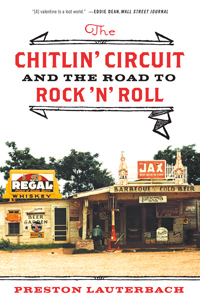 I’m deep into the Beale Street story and finding much delicious dirt. I’ll share little sprinkles here and there, keeping the richest of it for the book. One of the great characters of Beale Street lore is Sweet Willie Wine. He worked the street as a booster, pickpocket, and con man, got locked up in the state penitentiary at Nashville, and returned to the street after his release in the midst of the race riot that preceded Martin Luther King’s assassination. The experience converted the crook into an activist, but he managed to keep his visibility high among both constituencies. Here’s Sweet Willie Wine’s (he is now known as Minister Suhkara Yahweh) poignant recollection, from our recent interview, of a particularly hair-curling set of circumstances that led some humble folk of Forrest City, Arkansas to believe he was the Messiah in summer 1969.
I’m deep into the Beale Street story and finding much delicious dirt. I’ll share little sprinkles here and there, keeping the richest of it for the book. One of the great characters of Beale Street lore is Sweet Willie Wine. He worked the street as a booster, pickpocket, and con man, got locked up in the state penitentiary at Nashville, and returned to the street after his release in the midst of the race riot that preceded Martin Luther King’s assassination. The experience converted the crook into an activist, but he managed to keep his visibility high among both constituencies. Here’s Sweet Willie Wine’s (he is now known as Minister Suhkara Yahweh) poignant recollection, from our recent interview, of a particularly hair-curling set of circumstances that led some humble folk of Forrest City, Arkansas to believe he was the Messiah in summer 1969.
(photo of memphis police on Beale Street, March 29, 1968, the day Sweet Willie WIne came home, courtesy of Special Collections, University of Memphis)
“I was invited to come to Forrest City, Arkansas to help the people. (I had only been to one other place in Arkansas, Eighth Street. Being a crapshooter, pickpocket and dancer, it was only natural to gravitate over to West Memphis after everything closed down in Memphis.) The laborers in Forrest City were making a dollar an hour. The whole spirit of Nathan Bedford Forrest is over there. I was hesitant about it.”
A few days before the Forrest City demonstrations were to commence, Wine was hanging around the Beale district with other activists. “Right there at Fourth and Vance was a club called the Twilight Zone, which was ran by Big Daddy Leonard. The group of us were having a few beers and discussing. There was a young lady, [name omitted]. She was one of those young ladies in the street. She was naturally drawn to me because of how I treated her, like a young lady. Oftentimes I had more love and respect for them than they had for themselves. It was natural for me, it wasn’t anything I was putting on. She was in love with me, and she had a man. I didn’t know that she was feeling the way she did. I had never experienced jealousy before. She was at the door of the club. She said, ‘Come here.’ When I got up and went up to the door, she hit me right there [below the collarbone] with a broken beer bottle, cut me across my face. Everytime I breathed, the flesh would come out. I staggered out the door, her sister pulled off of Hernando onto Vance, right out front of the place. I said, ‘you see what your sister’s done to me?’ She looked past me, to my left, and I noticed she was doing like this [shaking her head] and I threw my hand up just as her sister hit me again across the wrist. I went over on the other side of the car, and started going out. A guy was shaking me, saying, ‘Willie Wine, Willie Wine, Willie Wine.’ I come back and noticed she was standing in the doorway as they put me in the ambulance. [Coincidental siren blares outside, during our interview.] In the hospital, I began to get myself to get back together. My Father, God, has a tendency to really get my attention when I’m stressed out. The saying, ‘those He loves, He chastises’? Well, he loves me to death.
“I can tell you, a few days later I was in the pulpit in Forrest City, Arkansas, talking to the people who were demonstrating. I hit down on the pulpit and where I had throwed my hand up to stop her from cutting me, it started bleeding.”
Like Stigmata. And he’s got the scars to prove it.
Come back soon and meet Pedro Lewis, Beale Street hustler, Black Muslim, and hit recording artist.



